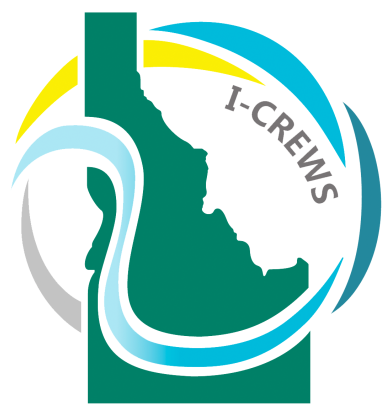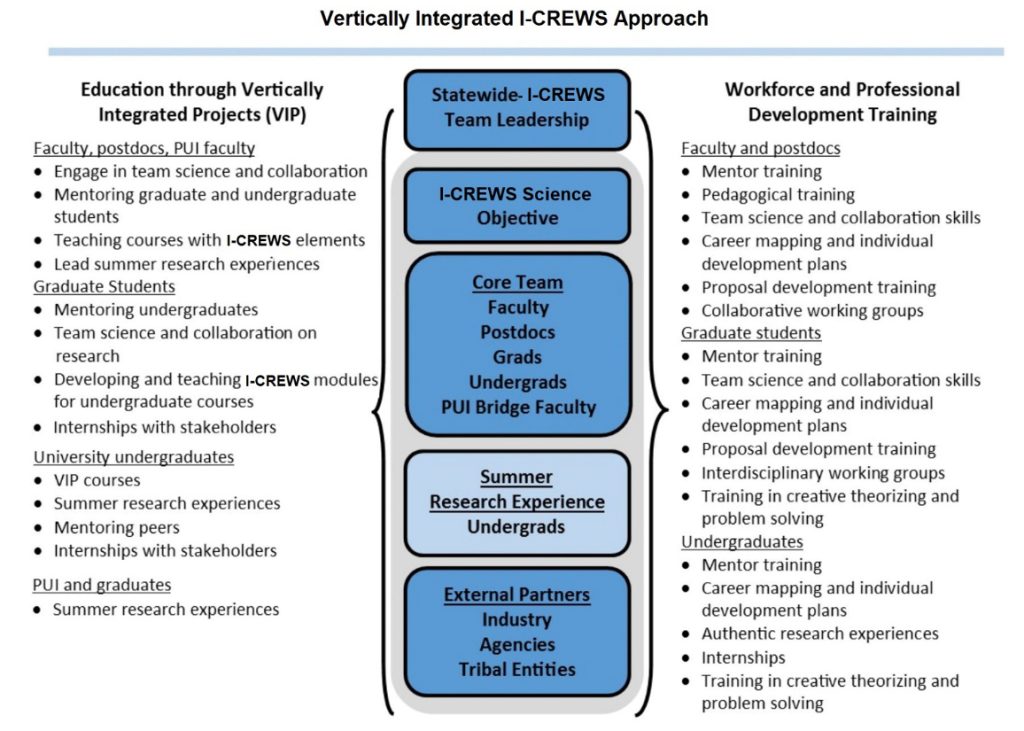Education
Overview
The overall goal of the I-CREWS Education and Workforce Development plan is to develop individual, community, and institutional capacity for more resilient and planned futures with respect to education and E-W systems. I-CREWS builds capacity and implements programs at levels spanning K-12, through graduate education, to faculty. Activities will build the necessary skills for leadership and democratic participation in E-W systems through internships, coursework, and teacher professional development.

